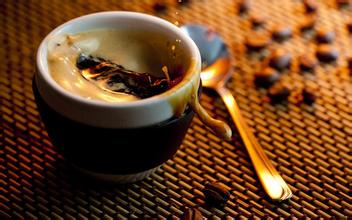Introduction to how to taste espresso, characteristics of espresso, grinding and calibration treatment
Introduction to how to taste espresso, characteristics of espresso, grinding and calibration treatment
Generally divided into: espresso, American coffee, single coffee
Because what we are testing today is espresso, let's mainly talk about espresso. The first espresso machine in history appeared in 1901 and was designed and made by Luigi Bezzara of Milan, Italy. The original design intention of this coffee machine is very clear: "make coffee in a short time."
Since then, the method of making coffee has changed completely, and "high speed and convenience" has become a brand new fashion standard for coffee shop service. Then, decades later, with the advent of Faema's commercial espresso machine Faema E61, machine-made coffee began to become popular, and people who love espresso culture began to grow explosively around the world.
In general, in order to make up for the shortcomings of a single kind of coffee beans, today's espresso will use a variety of coffee beans to make up for each other.
Generally speaking, coffee with Arabica beans and Robusta beans is mainly mixed, and espresso (espresso) is extracted by Italian coffee machine (steam compression extraction machine) as the base, with or without other ingredients, can be called espresso, so fancy and non-traditional American can actually be regarded as espresso.
Generally speaking, there is a formula that is purple and purple:
Espresso = a * concentrate + b * water / wine + c * milk / cream + d * others (b, c, d can all be zero)
Key words: multi-variety blending, Italian coffee machine, can add seasoning
By the way, we are distinguishing between individual coffee and general single coffee, which has two meanings. The first is "single variety". It will only be brewed with coffee beans from one kind of tree or even from a manor. there will not be a mixture of coffee beans from multiple tree species, and the production method is generally made by hand-brewing coffee.
The second is to "taste alone", tasting without milk, without sugar, without adding any other ingredients. This kind of coffee will retain all the original flavor of the coffee, and the taste will vary depending on the brewing method and the quality of the beans, as well as tasting at different temperatures.
Arabs love coffee to death! I have been hiding this coffee drink for centuries and do not want to share this magic drink with the people of the world.
Until the early 15th century, with the development of maritime trade, nourishing generation gap organizations and smuggling gangs around the world, coffee tree species were successfully brought to India.
Around the 17th century, when the Ottoman Empire attacked Vienna, Austria, he was cheated by double agent Kochsky and was defeated, leaving dozens of sacks of coffee beans in Vienna. Coffee began to spread in Austria, Italy and other countries in Europe, and then coffee began to spread all over the world.
There are three main categories of coffee beans in the world: Liberian beans, Arabica beans and Robusta beans.
Liberia is basically only found in some West African countries, the quantity is very small, the taste is very bad, and it is generally used for research.
Arabica trees are mostly planted at high elevations, have a much more refined flavor than the other two, and have a low caffeine content.
Robusta tree species are mostly planted in low altitude areas, have strong resistance to pests, are easy to breed, and have the highest yield of all tree species. Most of the raw materials of instant coffee are planted by this kind of tree.
Generally speaking, the coffee beans on the market are mainly Arabica beans and Robusta beans.

Important Notice :
前街咖啡 FrontStreet Coffee has moved to new addredd:
FrontStreet Coffee Address: 315,Donghua East Road,GuangZhou
Tel:020 38364473
- Prev

When using drip-filter brewing method, use what coffee beans should be used for ice-dripping coffee.
When using drip brewing method, it takes only ten seconds for coffee beans to lose their original flavor after being made from iced coffee beans espresso, so people who order this drink will usually finish it quickly. In the former, the flavor lasts much longer. Many fancy coffees, such as lattes, are made with espresso as the core, but dripping coffee cannot.
- Next

Description of Taste and Flavor of Yunnan Tieka Coffee beans introduction of varieties in Grinding scale Manor
Description of the taste and flavor of Yunnan iron pickup coffee beans Typica: the oldest native variety in Ethiopia and southeastern Sudan, all Arabica are derived from Tibica. The flavor is elegant, but the physique is weak, the disease resistance is poor, the fruit yield is less. Jamaica Blue Mountains, Sumatra Manning, Hawaii
Related
- Beginners will see the "Coffee pull flower" guide!
- What is the difference between ice blog purified milk and ordinary milk coffee?
- Why is the Philippines the largest producer of crops in Liberia?
- For coffee extraction, should the fine powder be retained?
- How does extracted espresso fill pressed powder? How much strength does it take to press the powder?
- How to make jasmine cold extract coffee? Is the jasmine + latte good?
- Will this little toy really make the coffee taste better? How does Lily Drip affect coffee extraction?
- Will the action of slapping the filter cup also affect coffee extraction?
- What's the difference between powder-to-water ratio and powder-to-liquid ratio?
- What is the Ethiopian local species? What does it have to do with Heirloom native species?

